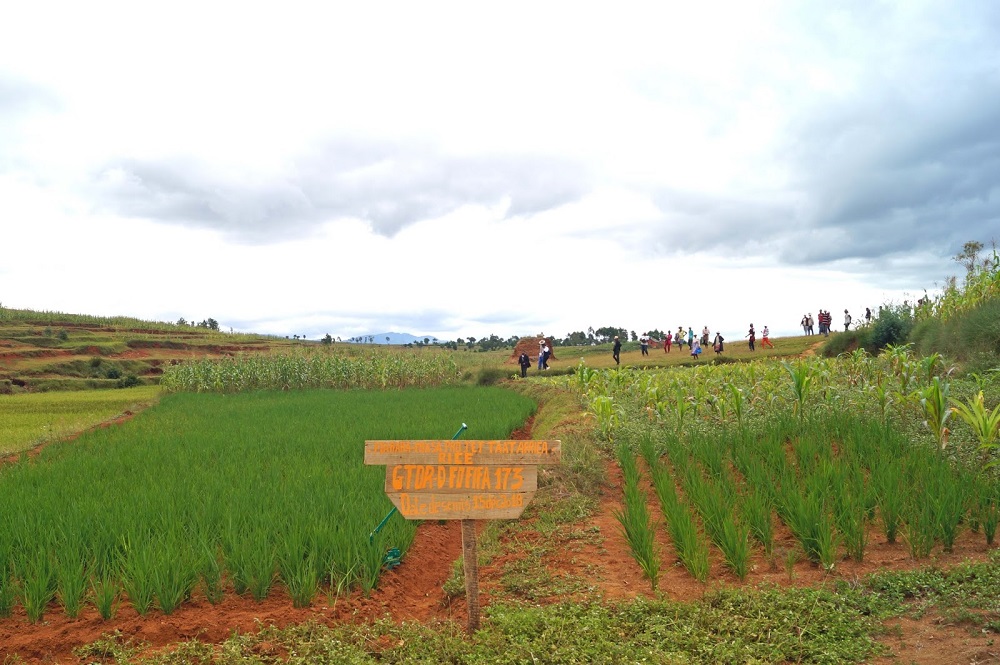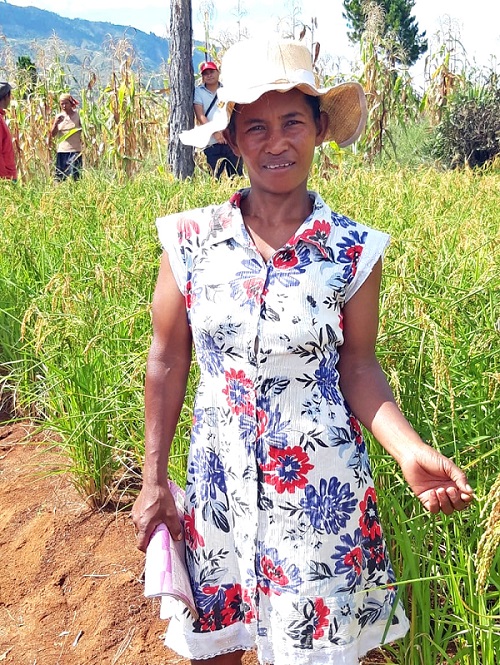
The demand for rice in Africa is growing as a result of population growth, increased per capita consumption, and a shifting preference toward ‘premium’ rice linked to increased urbanisation.
The African Development Bank (AfDB) reckons that the rice sector has the potential to become an engine for economic growth across the continent. To achieve self-sufficiency in rice by 2025, Africa requires the production of nearly 13 million additional tons of premium rice per year.
This will then improve the livelihood of at least 3 million producers and lead to economic gains of about US$5.5 billion per year among African countries.
However, to attain this feat, Africa requires holistic mechanisms which include widespread distribution and commercial adoption of high-yielding, climate-resilient rice varieties, proven accompanying soil, irrigation and pest management technologies, good agricultural practices (GAPs) and increased mechanization.
It is in this light that the bank is funding the Rice Compact of Technologies for African Agricultural Transformation (TAAT) as part of its plan to achieve Africa’s self-sufficiency in rice.
Sponsored by the African Development Bank (AfDB), TAAT’s main objective is to improve the business of agriculture across Africa by raising agricultural productivity, mitigating risks and promoting diversification and processing in 18 agricultural value chains within eight Priority Intervention Areas (PIA).
The programme increases agricultural productivity through the deployment of proven and high-performance agricultural technologies at scale along selected value chains which include rice.
The TAAT Rice Compact, led by AfricaRice, is currently being implemented in seven focus countries, including Madagascar.
Deploying GAPs in Madagascar
During the 2018-2019 cropping season in the region of Vakinankaratra, Madagascar where the rice compact activities are being implemented, the key focus was the dissemination of Good Agricultural Practices (GAPs) to rice farmers by establishing 45 demonstration plots managed by lead farmers who were trained in GAPs at the beginning of the season.
AfricaRice collaborated with two organizations FIkambanana FAmpivoarana ny TAntsaha ou association pour le progrès des paysans (VFTV-FIFATA), an umbrella organization of farmers’ associations and Groupe de Travail pour le Développement Regional Durable (GTDR-D) responsible for rural development in the region.
More than 2,400 producers participated and learned about GAP through the organized field days and regular exchanges within their groups and communities. Among the 45 lead farmers who allocated a plot of their farms for GAP application and demonstration were 14 female farmers, three women from VFTV-FIFATA and 11 women associated with GTDR-D.
Profiling women farmers
On the occasion of the International Day of Rural Women 2019, the rice compact profiled three of these lead women farmers, living in the district of Antsirabe 2, Vakinankaratra.
Mme RATISBONNE Nasolonjanahary Hortense, who is simply known as Mme Nasolo, is the president of Manovosoa Association of

women in the rural community of Ambano, which currently includes 13 members.
Mme Nasolo got the best yield of all the demonstration plots supervised by GTDR-D: in the rainfed ecology, the rice yield in her plot was close to 4 t/ha. According to her, the quantity could have been doubled if the crop calendar was respected.
Mme RAVONIHERIMANANTSOA Haja Claire or Mme Avotra, named after the rural women association “Avotra” where she is the president of the rural community of Fandrendrano Andranomanelatra, estimated her yield to be about 2.4 t/ha. The biggest challenge, according to her, is the intense hailstorms that occurred in March 2019 and destroyed her crop.
She said that however, in comparison with other rice crops around her field, hers was the best, most probably due to the variety used (FOFIFA 174) which resulted in a high number of tillers.
The same story was echoed by Mme RAHARIMALA Céléstine of the rural community of Soanindrariny and a member of VFTV-FIFATA at Ambano, who, on her 150-acre demonstration plot in the lowland irrigated ecology, doubled her rice yield from 90 kg with own practice to 180 kg with GAP application.
Crediting their achievements to GAP
According to Mme Nasolo, farmers just used a “tracer” earlier for sowing, which makes straight lines on the soil and they would just follow it to manually drill the rice seeds. But they did not know the seed rate.
The same practice was followed in the application of organic and chemical fertilizers as they would just broadcast fertilizers without knowing the appropriate quantity.
Thanks to the TAAT Rice Compact which equipped them with GAP knowledge, they used the 20×20 cm space between holes.
“There is a big difference,” they noted.
“Now we know exactly the number of grains per hole, which should be from four to seven grains and the fertilizer quantity is also calculated – one hand per hole for organic fertilizer – and we do not broadcast any more. For chemical fertilizer it is 2.5 kg NPK/are and 1.5 kg Urea/are now, while previously each application of NPK could for instance be as high as 3 to 4 kg/are,” they added.
The difference in weeding
Also, while she was weeding only two times before, she did it four times after GAP training, surprisingly with a lower number of laborers and consequently at a lower cost. For example, before she needed 20 man-days labor for the two times of weeding, but now the total is only about 12 man-days labor for the four times of weeding.
Mme Nasolo explained that for the first weeding (15 days after seeding), they practiced manual weeding, for the second and third weeding (always 15 days after the previous weeding) they combined manual and mechanical weeding, and for the last weeding, it was manual weeding.
“My neighbouring farmers asked me about this, and they did not believe when I said that I did not use chemical herbicide as there are fewer weeds”; said Mme Nasolo. “I think I would have got around 6 t/ha if the beginning of the crop season was earlier,” she said.
Mme Avotra who followed the same practices agreed that by putting many grains per hole and using a lot of seeds, she had earlier on believed that she would get more yield because of the small distance between holes, but with GAP, she reduced the seed quantity.
The application of fertilizer used to be random, as “I used only what I had without any calculation of appropriate quantity, putting seed, chemical and organic fertilizers together in the holes”.
She learnt to spread organic fertilizer before plowing and to put only NPK when sowing.
Mme Avotra also noted the advantage of regular weeding, compared to the earlier case of weeding when she was free, implying that there were a lot of weeds. She declared that with GAP she spent less time in weeding and there were fewer weeds.
Reduced seed rate, reduced labor and increased yield
Rice farming in the irrigated lowland involves transplanting. Mme Celestine says that with GAP, she learnt how to make the seeds germinate quickly by soaking in water for 36 hours and then covering them in a bag for 48 hours for uniform sprouting.
Consequently, “within 15 days after sowing, we can transplant young seedlings with two leaves whereas in our previous practices, we were transplanting 3-week old seedlings”, she said.
Moreover, she was planting four or five seedlings per hill producing only about 10 tillers, whereas with GAP, the number of tillers increased to 30 per hill, hence the increase in yield.

“it seems like I really played when I transplanted; it was the same case for weeding as there were fewer weeds and the spacing really facilitated the mechanical weeding. Other farmers and I did not believe until we saw the yield,” Mme Celestine said.
Like other women above, Mme Celestine was earlier using a small quantity of organic manure and did not use chemical fertilizer at all.
With GAPs, she spread 3 carts of organic manure three days before harrowing, added 3 kg/acre of NPK just after transplanting and 2kg/acre of Urea after the first mechanical weeding and then another application of 1.5 kg/acre of NPK after the second weeding.
Besides, she placed small irrigation canals on all the edges of her plot to ease the water circulation thereby also preventing insects from entering the rice field.
The three lead women farmers are fully convinced about the advantages of GAP with regards to reduced seed rate, reduced labor and increased yield.
GAPs for the coming season
Mme Celestine has even started making transplanting plans for this coming season, noting that previously, she used 50 kg for 30 acres, but now she needs only 10 kg of seeds for 30 acres with these new techniques, transplanting at 20×25 cm spacing.
While the women are ready to continue the GAP practices and lead fellow farmers, they anticipate challenges in acquiring the appropriate quantity of inorganic fertilizer for all their plots due to lack of funds.
Despite these challenges, having noticed the big difference between their usual practices and the results following good practices, they will certainly continue and extend GAP on other plots.
As true leaders, they indicated to do so especially on the first set of demonstration plots, because “farmers don’t believe until they see for themselves the results,” as Mme Nasolo said.
Mme Celestine is anticipating a special training to be provided by VFTV-FIFATA, as there are many farmers (around 40 farmers) who showed real interest in GAP.
She already has plans to start the rice farming activities for this season, guiding the other members of her association and neighborhood farmers, who are interested with GAP and teaching them the practices.
The three women indicated that they have chosen to keep the harvested produce as seed for the coming season for them and for the other members of their associations, who were very involved and followed each activity on their demonstration plots and other farmers in the neighborhood.
Mme Celestine however added that they also need to learn improved techniques since the yield is not only due to the choice of variety and seeds but also because of following all the GAP.
She concluded by saying “I really see the difference with these new techniques, my dream is that after one or two years, with my plots of 30 area, my family can be self-sufficient, and we can even get a surplus of 1 ton so that we can buy enough inorganic fertilizers”.

